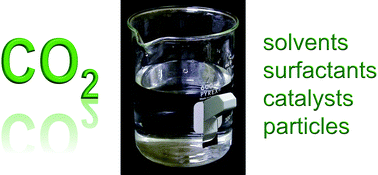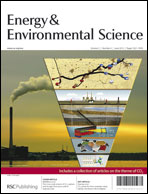CO2-triggered switchable solvents, surfactants, and other materials
Abstract
Waste CO2 at atmospheric pressure can be used to trigger dramatic changes in the properties of certain switchable materials. Compared to other triggers such as light, acids and oxidants, CO2 has the advantages that it is inexpensive, nonhazardous, non-accumulating in the system, easily removed, and it does not require the material to be transparent. Known CO2-triggered switchable materials now include solvents, surfactants, solutes, catalysts, particles, polymers, and gels. These have also been described as “smart” materials or, for some of the switchable solvents, “reversible ionic liquids”. The added flexibility of switchable materials represents a new strategy for minimizing energy and material consumption in process and product design.

- This article is part of the themed collection: Carbon Dioxide

 Please wait while we load your content...
Please wait while we load your content...